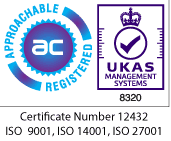Where My Social Conscience Came From
Between 1948 and 1970, nearly half a million people moved from the Caribbean to Britain, which in 1948 faced severe labour shortages in the wake of the Second World War. This migration of British Nationals was later referred to as ‘the Windrush Generation’. My parents were of that generation and arrived in the UK in the 1950s.
As they were deeply religious, on arrival in Britain they joined the black churches that started to spring up, to satisfy their need to worship. These churches started out as meetings in a living room of one of the congregation. However, as immigration continued, those congregations quickly grew larger and the services moved to church buildings.
A large proportion of the children of the Windrush generation grew up in ‘the church’. I was one of those children. At church, in Newport, South Wales, I gained a supplementary education that included extra lessons in reading and writing, from a very early age.
Gradually, the churches started to find a political voice, which did not come easily. This is because some of the more traditional black Christians continued to believe that their main purpose was to focus on church life, rather than to participate in public life.
My father, a factory worker, became a lay preacher and officer of a church with a large congregation that had a high profile in the community. Even though he became a community leader, he would say that he was not interested in politics. In fact, he would often call politics the art of “politricks”. However, due to his standing in the community he developed a very strong social conscience and was acutely aware of the problems that affected a lot of people in the community, such as being impacted by the poverty premium or having issues with school institutions. Therefore, he always involved himself in activities that did something to help people in the community.
His whole persona was centred on this aspect. He encouraged the whole of his family to develop this sense of responsibility; to contribute to causes that helped alleviate inequalities for people in disadvantaged and underserved communities. Whoever they were, whatever their backgrounds, and wherever they lived.
At the heart of my father’s plans for his childrens’ future, was to leave a legacy of social mobility for them and for his grandchildren, using education. He would often say, “silver and gold may fade away, but a good education will never decay”. His expectation of us was to do well in our education.
Supplementary to this was my mother’s drive to encourage us to be financially literate. When we were old enough, she introduced us to the benefits of saving by opening building society accounts for each of us and introducing us to the Caribbean ‘pardner’ system. The pardner system is where a group of people, the 'pardners', agree to pay a regular sum or 'hand', to a trusted person or 'banker', usually an older, respected member of the community, on a weekly basis. Every week, one member of the group received the total amount or 'draw', contributed by all of the partners. Joining a pardner helped me purchase my first bass guitar and helped me to keep my first car (affectionately known as my ‘banger’) on the road.
Even though our family belonged to a working-class community, this did not stop my parents from finding opportunities to help those that needed our assistance. Therefore, I have followed my parents’ example of giving back and have involved myself in activities that promoted equity of opportunities to groups of people that would ordinarily not have access to them.
The need to do this was amplified when I started my own family in the City of Bristol, where I have lived for over 25 years. Once my children started to go to school, I became very motivated to be involved as a volunteer in educational settings. Therefore, I became a school governor in primary schools, secondary schools (where I became Chair of Governors) and post-16 provision. I was also a standing invitee member of the Children & Young Persons Scrutiny Committee in Bristol City Council as well as the chair of a social enterprise that, amongst other things, operated supplementary schools in Bristol.
I have also held several Non-Executive positions, that allowed me to contribute to advocating for disadvantaged communities in gaining access to financial services and attaining access to employment opportunities. This included being on the board of the award-winning St Pauls Carnival and being on the board of the Bristol Credit Union.
My passion for understanding how innovation and emerging technologies can be used for business advantage, has allowed me to contribute to ‘levelling up’ in disadvantaged communities, by getting involved with charities that create new pathways for young people interested in STEM. Assisting young people to develop and reach their full potential in the area of STEM, is also a core theme for Cambridge Management Consulting.
One of the charities that Cambridge Management Consulting is supporting, is DigiLocal CIO (www.digilocal.org.uk). The charity aims to nurture a passion and capability for engineering creativity in young people, in Bristol and the West of England. DigiLocal is also very keen to support underrepresented groups and introduce them into technology. They work closely with community centres, high tech companies, universities, STEM ambassadors and other partners across the region and internationally to deliver high quality, age-appropriate, scaffolded activities on a weekly basis.
DigiLocal utilise programming languages and platform technologies to engage young people in technology-based projects, to support problem solving skills vital to life-long learning and careers.
This complements Cambridge Management Consulting’s goal to link capable young people with organisational capabilities that can be used in nascent markets. The company aim to assist with identifying the core dynamic processes of innovation, necessary for the 4th Industrial Revolution, or 4IR.
4IR has accelerated the transformation of industry and is distinguishable by its development of cyber-physical systems. With cyber-physical systems, technology interacts with human and machine in new ways. This interaction changes the capabilities of people and machines, and augments technology into people’s lives. This has fuelled the digital economy through the introduction of emerging technologies such as AI, machine learning, adaptive manufacturing, and ‘clustered regularly interspaced short palindromic repeats’ (CRISPR), to name a few. The digital economy is characterised by the recombining of talent, capabilities and expertise, with new markets to satisfy new needs often via platform businesses.
“Data is the new oil driving the economy globally—and artificial intelligence is the engine shaping our future.” - Young Sohn, President and CSO of Samsung Electronics and Chairman of HARMAN International industries
Platforms are organisations that act as hubs made up of core technologies, standards, and tools that provide benefits to companies, sets of companies, or users. Platforms can facilitate retail and buying of services, connect people to jobs and allow people to share and access digital code. Platform business models are becoming a prominent part of the digital economy and represent a shift away from traditional notions of firms and markets.
Cambridge Management Consulting is supporting DigiLocal CIO to maintain their sustainability during these unprecedented times. However, they are planning to be more involved by providing volunteers for some of DigiLocal’s existing projects and collaborating with them on new ones. For example, Cambridge Management Consulting are collaborating with DigiLocal on the formation of an entrepreneurial ecosystem, with companies from the high-tech sector and a financial cooperative, for the purpose of engaging young people from underrepresented communities, in STEM, business management and financial management. The plan is to create a platform business challenge.
The challenge will allow young people to experience the whole innovation lifecycle from ideation to value capture and then assist them with managing the platform business. The activities will emphasise the importance of developing non-cognitive skills like perseverance, conscientiousness, teamworking and interpersonal skills. These skills can be integrated into STEM learning to provide the need for innovation and an entrepreneurial attitude, as well as the emotional and social intelligence required in today’s nascent markets.
“4IR will require a much more blended learning experience, with skills such as creative ingenuity and placing emphasis on design, entrepreneurship and ethics being required alongside technical STEM staples.” – The Institute of Engineering and Technology
Subscribe to our Newsletter
Blog Subscribe
SHARE CONTENT










